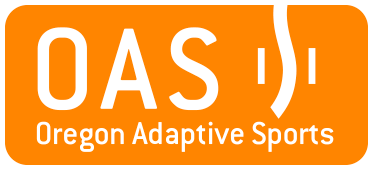Adaptive Ski Equipment Inspection
Take care of your gear, so it can take care of you.
Inspecting your gear before, during, and after the season can help to minimize downtime and prevent injury from equipment malfunctions. Manufacturer’s literature on equipment care should be followed if it is available. This is a simple outline for ideas on what to check and may not cover everything on your piece of equipment. Please use your best judgement when inspecting and caring for your gear.
Mounting Gear
Monoskis: Ski “boot” or foot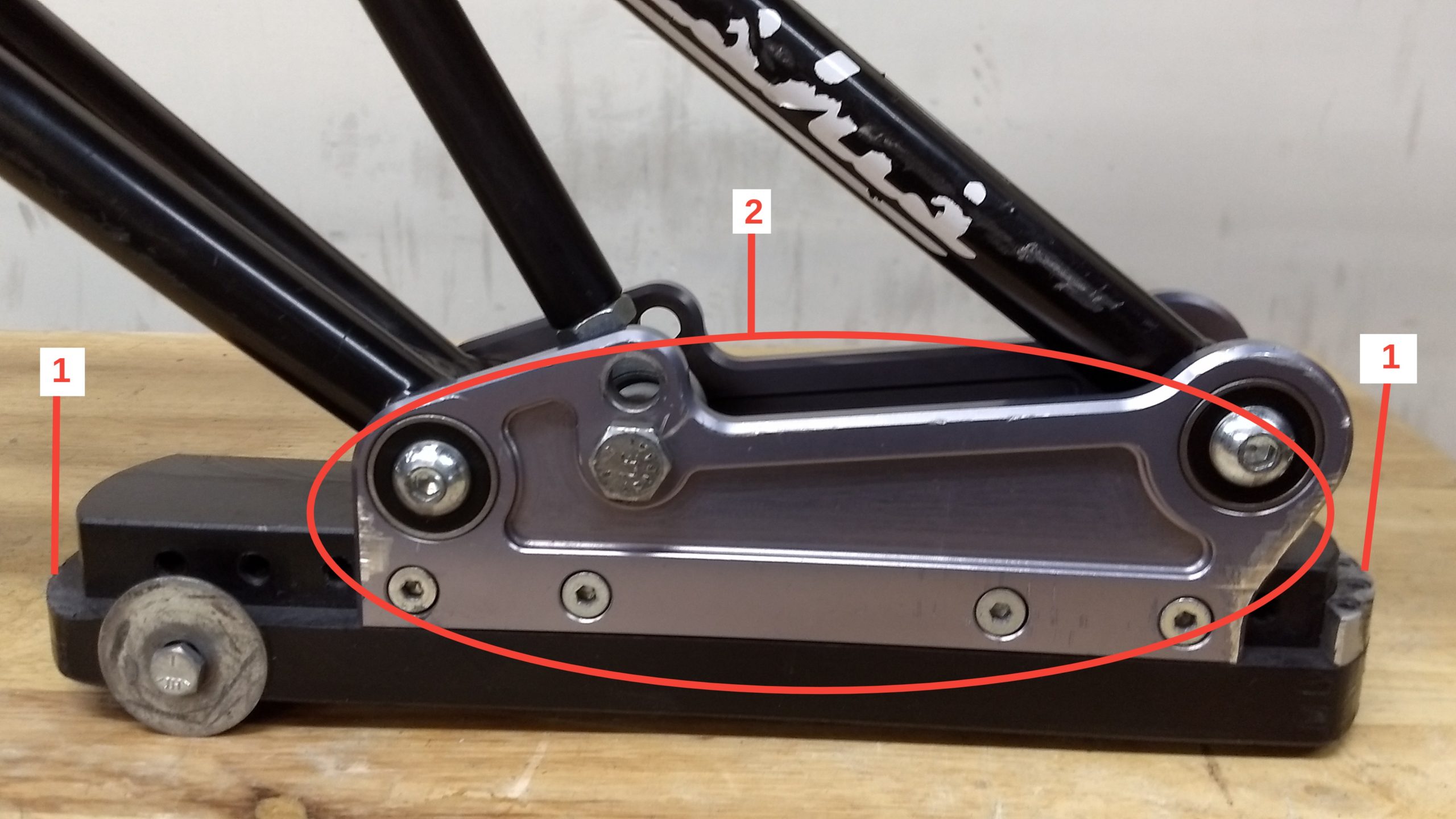
- Inspect heel and toe condition (1)
- Attachment to frame is tight (2)
- Check fit with binding(s)
Biskis:
- Ensure the articulation unit moves freely and that there are no missing, broken, or loose pieces.
Skis
- Removed from equipment if possible
- Edges tuned. Bases p-texed and/or base ground and storage waxed
- Binding mounting screws checked for tightness
- Binding DIN turned down to minimum. Heels in the up/closed position
- Skis stored vertically to preserve camber
Frames/foot rests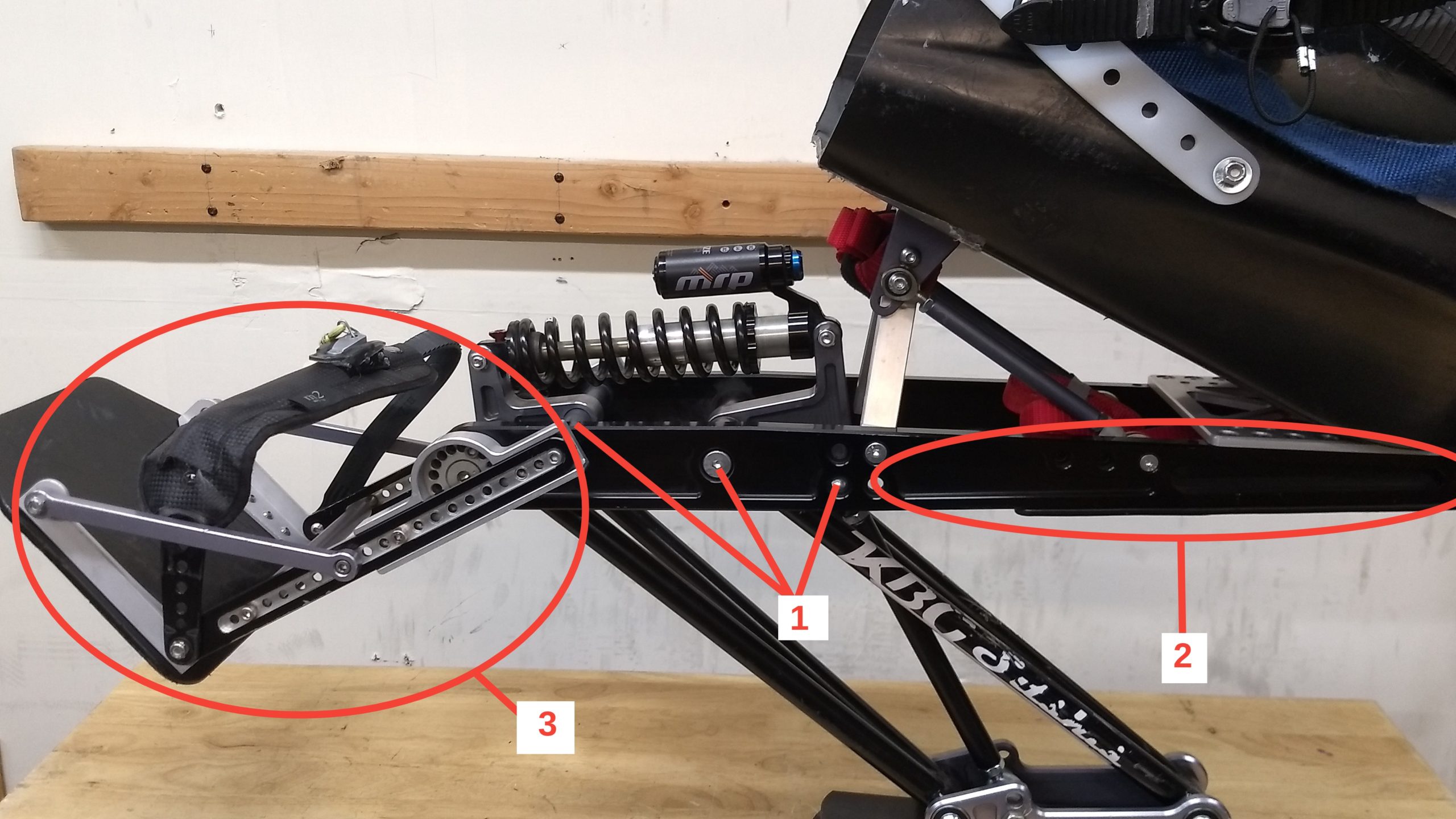
- Check that all frame bolts are present and tightened. Note: Be careful not to over tighten frame pivot bolts for the suspension (Check manufacturers specifications). (1)
- Look at frame joints/welds. Do you see any cracked paint or an obvious break in the weld? (2)
- Is the footrest bent or otherwise damaged? Are the clamps or bolts securing it to the frame tight? (3)
Suspension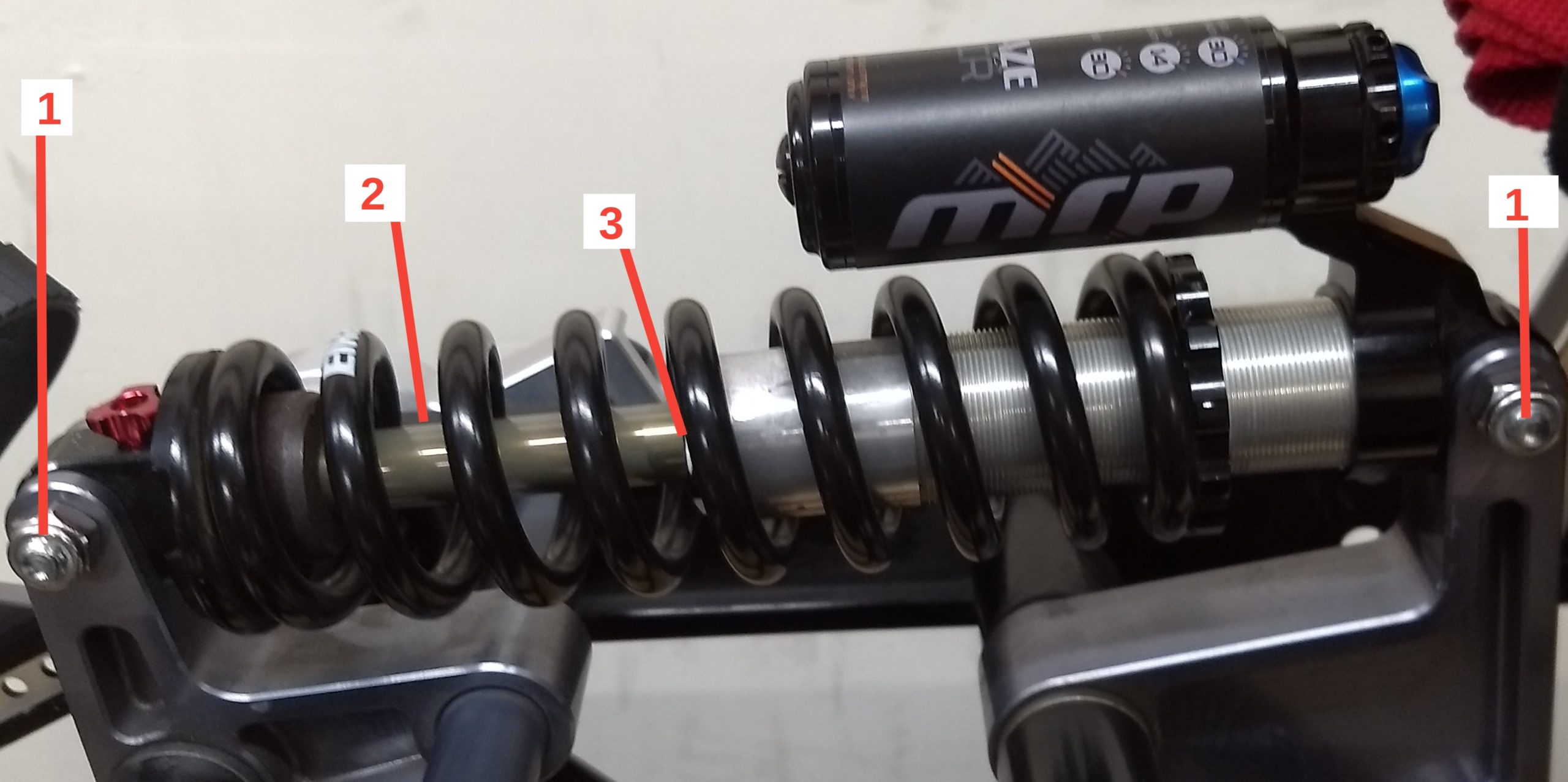
- Check tightness of shock pivot/mounting bolts, do not over tighten (Check manufacturer’s specifications). (1)
- Look for scratches in the coating and/or excessive oil on the shock shaft. (2)
- Check the condition of the dust/oil seal where the shaft enters the main body of the shock. Is it dirty? Wipe clean with a cloth. Is it cracked or soaked with oil? It may need to be serviced. (3)
Lift Assist (If applicable)
- Does the lift assist function with your body weight in the bucket?
- Do the struts seem slow or less supportive? It may be time to replace them.
- Is there any play in the actuating lever or cable?
- Does the lever stay in place in “up” mode?
Buckets
- Are there any cracks in your bucket, especially around the mounting points to the frame or straps?
- Is all the mounting hardware present and tight?
- Check condition of straps/buckles/ratchets/hook-and-loop fasteners and their mounting points to the bucket.
Outriggers
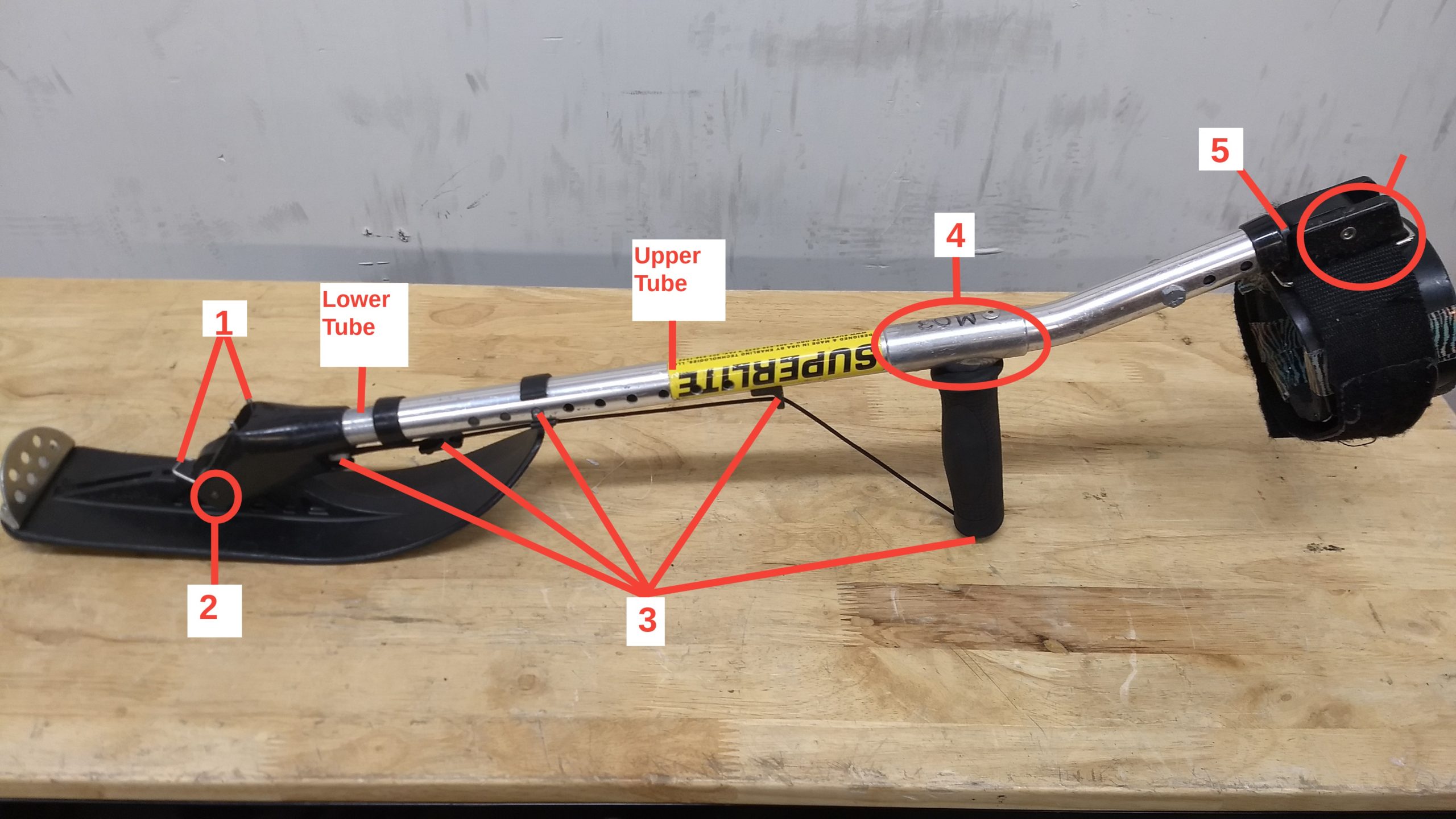
Example: Enabling Technologies Superlights
- Are skis intact?
- Is the ski return spring complete and functioning? (1)
- Look for cracks around the area where the pivot bolt goes through the plastic “knuckle” in the lower tube. (2)
- Are the upper and lower tubes straight?
- Are the parts and pieces involved in the string system intact and functional? (3)
- Are the rivets holding the handle onto the main tube tight? (4)
- Is the cuff pivot bolt tight? Does the cuff pivot as it should?
- Is the plastic insert attaching the cuff to the upper tube tight and free from cracks? (5)
- Are there any cracks around the cuff especially near the mounting point and where the cuff band meets the rectangular molding? (6)
Disclaimer: This information is intended to be a guide, please use at your own risk and check with the manufacturers of your equipment for any specifics.
